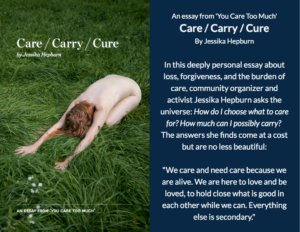by Zoe Rooney of A Quick Study
In the world of creative entrepreneurs, solo businesses, and income-through-crafting (or attempted-income-through-crafting, as the case may be), the conversation about worth, value, and pricing is having a big moment.
People are coming to realize that there’s actually quite a bit that goes into what you pay for an item and what an item is really worth (note that those two things are often not equivalent).
Jess and I have tried to contribute to the value conversation through our grand experiment Worthsy, but beyond the numbers game of pricing, discounts, and value, I think there’s a whole element about personal worth that hasn’t been discussed as thoroughly.
When you ARE your business, when your products come directly from your brain and your hands, it feels like putting a price point on your products means putting a price point on yourself.
I paint as a hobby (in fact, my art degree was actually focused on painting). If I were to put up a painting for sale, I would be pricing not on the cost of the canvas nor on the number of hours it took to complete the painting. Of course, I’d consider those things as a starting point. But if I were to sell a painting, what I’d really be pricing is the creativity, inspiration, and technique, and how all those things (and likely more) come together in a final product.
In a society where we make fun of too much self-confidence, it’s incredibly hard to place value on our own strengths and talents.
It often feels awkward and socially unacceptable to put a high price on our skills and talents.
The thing is, by lowering the price point, by undervaluing our work, and by underselling ourselves, what we’re really communicating is that our creativity or inspiration or technique isn’t valuable.
If that’s true, like for certain processes and media where technique isn’t central to the outcome, that’s fine.
But when we get down to the pieces and products that are truly wrought from our hands, that take attention to technique, and that take extensive development and creativity, it’s downright dangerous.
Dangerous because it risks lowering the value of handmade across our community to the point where it isn’t sustainable for makers and artists to keep making and creating art, and where the only thing that can be maintained is mass-production or a low quality of life for the makers.
Putting a price on intangibles that go into your work is hard.
But a world without sustainable small businesses built around handmade products? Hard doesn’t even come close.


